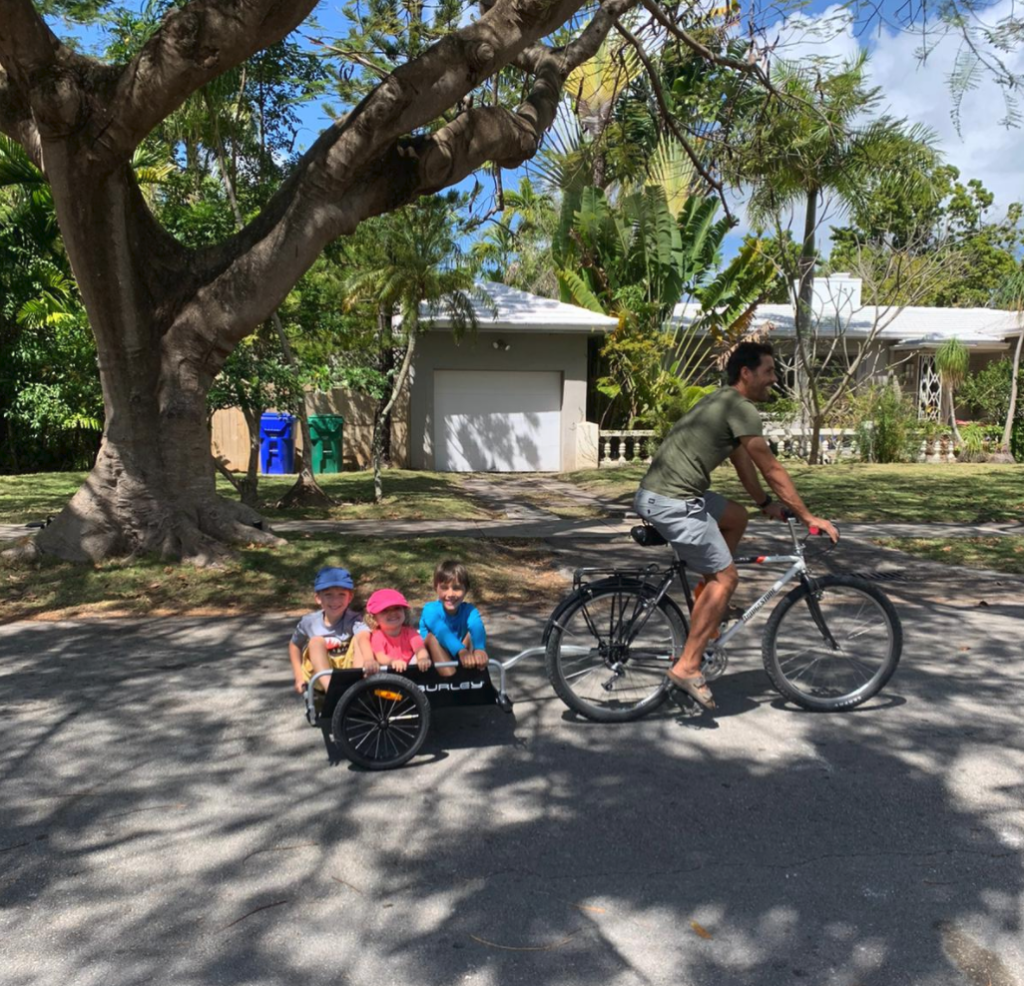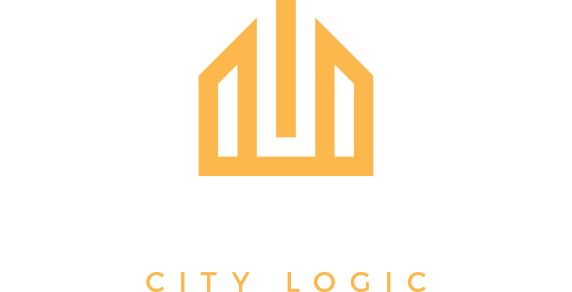
The last month has been a doozy to say the least. For most of us we have never experienced a pandemic of this scale in our lifetime. Businesses have closed their doors and our city streets are mostly empty. Markets have been more volatile than in 2008 and it seems like volatility will continue into the foreseeable future until there is more certainty about what impact Covid-19 will have globally.
Seems like our “normal way of life” has changed considerably in just several weeks. No one knows how long social-distancing will go on for. But the longer it does go on, the greater the impact it will have on urbanism, the economy and real estate. Our normal way of life will likely change, but hopefully for the better. One thing is for sure, life has slowed down for many of us and that is probably a good thing.
Urbanism
As an urbanist I am enjoying the less congested streets. Bicycling has become more enjoyable and aggressive driving behavior seems to have declined in the last month. For the most part motorists seem to be more respectful of cyclists and people walking. In my Miami yuppy/hipster neighborhood there are exponentially more people walking, biking and running with their families than 1 month ago. In fact, I’ve never seen so many people walking or sitting on their front porch in the ten years I’ve lived in my neighborhood. My local bike shop said business has been booming since “social-distancing” became a thing. With gyms closing, more and more people are dusting off bicycles and they are getting around on 2 wheels. It’s a beautiful thing for us urbanists to experience.
Biking in the Time of Covid-19
Last month, a group of nearly 50 academics and experts on public health and transport wrote an open letter to the UK government urging elected officials to encourage walking and biking amid the crisis. According to The Verge, the Colombian capital, Bogota, is adding 47 miles of bike lanes to reduce crowding on public transport and help prevent the spread of COVID-19. New York City, which has witnessed a surge in cycling as people avoid public transportation, has said it would install bike lanes on 2nd Avenue between 34th and 42nd streets in Manhattan and Smith Street in Brooklyn. Mexico City is considering a fourfold increase to its cycling network. With parks, beaches and playgrounds closing our streets have become our default public spaces. Seems like closing some streets to motor vehicles in order to allow people to bike and walk safely is a no-brainer. Cities can quickly and inexpensively create protected bike lanes by simply closing traffic lanes for cyclists and pedestrians by erecting orange cones. We’ve already seen a significant decrease in traffic volume, so closing lanes of traffic would have minimal effect on traffic.
Source: INRIX
Hopefully more cities will start taking steps to make our streets safer during this time of increased demand from cyclists and from people walking, running and skating. It seems like we’ll be on lockdown until the end of April and it’s important that people stay healthy by exercising.
The Economy
The more prolonged our containment measures are in effect the greater the dramatic plunge in production and trade. Last month Pierre-Olivier Gourinchas, Professor of Economics, UC Berkeley, wrote “Flattening the Pandemic and Recession Curves”. In short, flattening the infection curve inevitably steepens the macroeconomic recession curve.
According to Professor Pierre-Oliver Gourinchas:
“Consider China, or Italy: increasing social distances has required closing schools, universities, most non-essential businesses, and asking most of the working-age population to stay at home. While some people may be able to work from home, this remains a small fraction of the overall labor force. Even if working from home is an option, the short-term disruption to work and family routines is major and likely to affect productivity. In short, the -appropriate- public health policy plunges the economy into a sudden stop. To wit, all indicators coming out of China, for instance, indicate a dramatic plunge in production and trade.
The first thing to note is that, even in that `perfect’ world, the economic damage would be considerable. To see this, assume that, relative to a baseline, containment measures reduce economic activity by 50% for one month and 25% for another month, after which the economy returns to the baseline. Such a sharp but short-lived decline in activity does not seem unreasonable if one thinks that a majority of the labor force is currently shuttered at home in places like Italy or China. In fact, we could anticipate a much more drawn out process. Yet, that scenario would still deliver a massive blow to headline GDP numbers, with a decline in annual output growth of the order of 6.5% relative to the previous year. Extend the 25% shutdown for just another month and the decline in annual output growth (relative to the previous year) reaches almost 10%!”
This is a slippery slope for all of us. If strict containment goes on for much longer Federal Reserve Bank of St. Louis President James Bullard predicted the U.S. unemployment rate may hit 30% in the second quarter because of shutdowns to combat the coronavirus, with an unprecedented 50% drop in gross domestic product.
The real estate industry will be severely impacted. Rents and mortgages will likely go unpaid and non-performing loans will likely mount. This is a big threat to the $3 trillion commercial mortgage market according to The Wall Street Journal. Lacking rental revenue, many property owners could default on their mortgages—forcing banks, already struggling with the pandemic’s fallout, to write down loans and raise capital to cover for their losses.
Cities, counties and states will also face some tough times ahead. Property values will likely decline, which will directly affect property taxes, the main sources of revenue for cities and counties. Consumers are only spending on essentials, so sales tax revenues will decrease for states during a time when Coronavirus pandemic-related expenses are increasing.
A recession is coming according to Professor Gourinchas. From his perspective the priority should be:
(a) to ensure that workers can remain employed -and collect their paycheck- even if quarantined or forced to stay home to look after dependents. Temporary layoff assistance is a key component. Without it, it is even unclear whether public health advisories can be followed. Households need to be able to make basic payments (rent, utilities, mortgages, insurance).
(b) to ensure that firms can weather the storm without going into bankruptcy, with easier borrowing terms, possibly temporarily waving tax or payroll payments, suspending loan payments, or providing direct financial assistance where needed;
(c) to support the financial system as non-performing loans will mount, so as to ensure the crisis does not morph into a financial crisis
Real Estate After Covid-19
Once Coronavirus is a thing of the past (and it will be), there will likely be some changes as it relates to real estate. The retail, hospitality and office assets classes are the most likely to be negatively impacted. Multifamily, self storage and industrial will likely be the winners.
Retail
Retail will likely be the biggest loser. Many retailers (restaurants included), which were already struggling, will likely never reopen their doors. Those that do, will quickly discover that many of their customers are now unemployed and are only spending money on essentials. Underwriting retail deals will be tricky in this environment because there are so many unknowns when it comes to the behavior of consumer spending. Vacancy rates will likely increase dramatically. For the opportunistic real estate investor, with cash in hand and a long-term outlook, this could be a great buying opportunity.
Hospitality
Hotels and short-term rentals will be hit hard. International travel will likely be impacted for at least the next 3 to 4 months. It will be some time before conferences and events with hundreds or thousands of attendees can go on. Domestic hospitality will likely recover more quickly, but there will still be plenty of pain. It will be interesting to see if short-term rentals are able to transition back to multifamily rentals where we are likely to see greater demand as homes are foreclosed on. I suspect that many of the short-term rentals were underwritten with much higher ARRs (Average Room Rate) than a multifamily monthly rental so we will likely see an increase in short-term rental foreclosures.
Office
The office sector will likely feel some pain, as many employers will likely realize that many of their employees are capable of working from home responsibly (and probably more productively). So it seems like there will be less demand for office space. Companies will likely downsize office space and have more “shared work spaces” . That being said humans are social animals and 90% of our communication is non-verbal. We need human interaction to work efficiently. Remote work will likely be an occasional tool for us to use at most 2 or 3 times per week.
Multifamily & Self Storage
As people lose jobs and paychecks are cut, foreclosures are likely to increase. Everyone needs a roof over their heads, so multifamily should do well as people look to downsize and cut expenses. But where will Americans put all their useless junk they rarely use? Self Storage. Both of these asset classes did well in the last recession and they will likely do the same in this downturn.
Industrial
Covid-19 has forced most people to do their non-essential shopping online. This will have a direct impact on supply chain logistics of goods and the winner here is industrial. Retail’s loss will be e-commerce’s gain in the long run, with industrial investments looking more attractive as physical retail has been exposed during the Covid-19 pandemic.
Life after Covid-19
The longer social-distancing goes on the greater the negative impact it will have on our economy and real estate. Ironically, the longer social-distancing goes on the greater the positive impact it will probably have on urbanism. Hopefully, people will come to miss safer bike rides, spending more quality time with their families, going for walks and getting to know their neighbors.
So when will social distancing end? It all comes down to how many deaths we as a society are willing to deem acceptable. As “The Donald” stated every year 40,000 people are killed in motor vehicle crashes (a pandemic in its own right). Many of these crashes are preventable if we designed roads that prioritized safety of all users rather than moving motor vehicles quickly. Many Coronavirus deaths can also be prevented if we prioritize social distancing over opening up the economy quickly. As a society we are willing to turn a blind eye to the 40,000 people that are killed every year and the hundreds of thousands of people that are critically injured in motor-vehicle crashes. Is our priority saving lives or saving the economy? My guess is that at some point we will prioritize the economy. This will probably happen sooner rather than later. Hopefully we won’t forget about all the good that has come out of social distancing and the quick and positive impact it has had on urbanism, even if it was only for a couple of short months.
